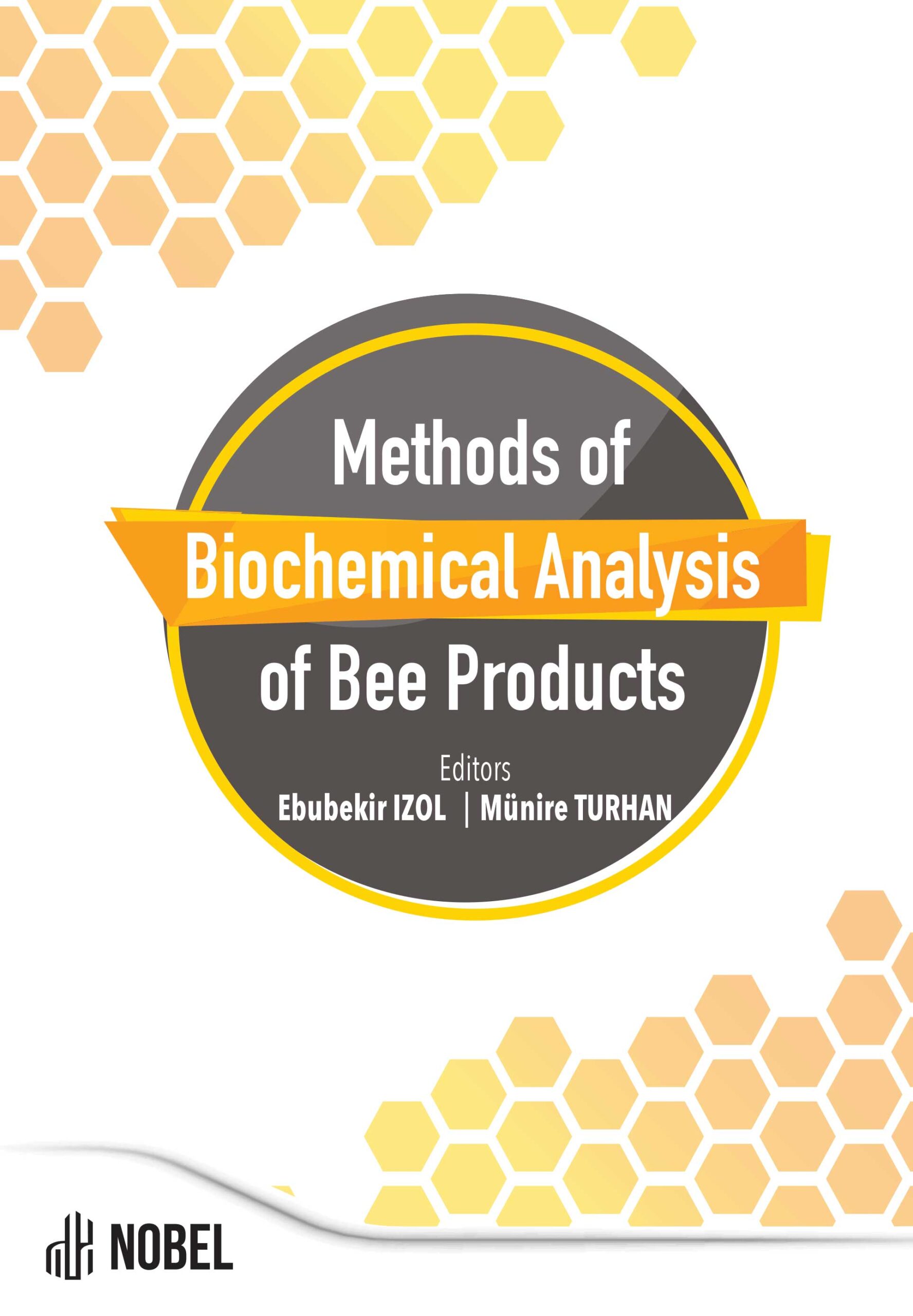Spectrophotometric Methods of Proline and Diastase Analysis in Honey
Bayram Yurt (Author)
Release Date: 2024-06-07
Honey is the most produced and consumed bee product and is a gift from the Creator to humanity. However, regular chemical analysis is necessary to determine the quality of honey and whether it is fake. Proline and diastase analyzes are also included in the basis of honey-related analyzes. Proline is an amino acid found in [...]
Media Type
Buy from
Price may vary by retailers
| Work Type | Book Chapter |
|---|---|
| Published in | Methods of Biochemical Analysis of Bee Products |
| First Page | 109 |
| Last Page | 139 |
| DOI | https://doi.org/10.69860/nobel.9786053359326.7 |
| Page Count | 31 |
| Copyright Holder | Nobel Tıp Kitabevleri |
| License | https://nobelpub.com/publish-with-us/copyright-and-licensing |
Bayram Yurt (Author)
PhD, Assoc. Prof. Dr., Bingöl University
https://orcid.org/0000-0001-5447-1586
3Dr. Bayram YURT is an associate professor at Bingöl University, Department of Food Engineering. He has scientific studies on medicinal aromatic plants, bee products and antioxidant properties of foods, chemical contents and food analysis. He also produces innovative new products from food products and ensures the commercialization of these products. She gives lectures on the analysis of bee products. He has many international scientific studies and is currently conducting many projects.
İzol, E. (2021). “Yenilikçi Arı Ürünleri ve Biyolojik Önemleri.” In Tarım ygulamalarındaYenilikçi Yaklaşımlar, ed. İnci H., Kökten K., Iksad Publications, 77–116.
İzol, E. (2022). “Arı Ürünlerinin Sağlıklı Beslenmedeki Önemi”, In Sağlıklı Yaşam ve Beslenme, ed. Haspolat Y.K., Ertuğrul S., Orient Publications, 313-323. ISBN:978-605-2945-6-2.
Yurt, B. Çakır, S.(2020) Some physicochemical properties of honey produced Iğdır and region in Turkey. Tr. J. Nature Sci. Volume 9, Special Issue, Page 51-57.
Yurt, B. (2023). “Factors Affecting Crystallization of Honey”, Bee And Bee Products, ed. İzol, E., Koçyiğit, M., Haspolat, Y.K., Orient Publications, 37-44. ISBN: 978-625-6893-28-3.
Yapıcı, İ., İzol, E., Tarhan, A. Significant Bioactive Components in Bee Products, Bee And Bee Products, ed. İzol, E., Koçyiğit, M., Haspolat, Y.K., Orient Publications, 10-16. ISBN: 978-625-6893-28-3.
Nielsen, S. S. (Ed.). (2003). Food analysis laboratory manual (p. 557). New York, NY, USA:: Kluwer Academic/Plenum Publishers.
Onur, F. Analitik Kimya II, Ankara Üniversitesi Eczacılık Fakültesi Yayın No:101, s:135-149; Ankara 2011.
F. James Holler, Stanley R. Crouch; Fundamentals of Analytical Chemistry, 9th edition
Gore, M. Spectrophotometry & Spectrofluorimetry. New York: Oxford University Press, 2000
Ecem Bayram, N. (2023). Nectar honey from Turkey: crystallization and physicochemical profile. European Food Research and Technology, 249(4), 1049-1057.
İzol, E. 2023. Bazı Arı Ürünlerinin (Bal, Polen, Propolis, Arı Sütü ve Arı Ekmeği) LC/MS-MS ile Sekonder Metabolitlerinin ve Biyolojik Aktivitelerinin Belirlenmesi. Doktora tezi. Atatürk Üniversitesi Fen Bilimleri Enstitüsü, Erzurum.
Anonim., 2023. Türk Gıda Kodeksi Bal Tebliği, Tarım ve Orman Bakanlığı, Ankara, 2023/37. https://www.resmigazete.gov.tr/eskiler/2023/11/20231124-5.htm.
Bogdanov, S., Martin, P., & Lullmann, C., 2002. Harmonised methods of the international honey commission. Swiss Bee Research Centre, FAM, Liebefeld, 5, 1-62.
International Honey Commission, (IHC), 2009 International Honey Commission, (IHC) Harmonised methods of the International Honey Commission Retrieved August 8, 2018.
Anonim, 2008. TSE 13357. Bal Standardı Türk Standartları Enstitüsü, Ankara.
Afshari, A., Ram, M., & Mohamadi, S. (2022). Quality evaluation of Iranian honey collected from Khorasan province, Iran. International Journal of Food Science.
| onix_3.0::thoth | Thoth ONIX 3.0 |
|---|---|
| onix_3.0::project_muse | Project MUSE ONIX 3.0 |
| onix_3.0::oapen | OAPEN ONIX 3.0 |
| onix_3.0::jstor | JSTOR ONIX 3.0 |
| onix_3.0::google_books | Google Books ONIX 3.0 |
| onix_3.0::overdrive | OverDrive ONIX 3.0 |
| onix_2.1::ebsco_host | EBSCO Host ONIX 2.1 |
| csv::thoth | Thoth CSV |
| json::thoth | Thoth JSON |
| kbart::oclc | OCLC KBART |
| bibtex::thoth | Thoth BibTeX |
| doideposit::crossref | CrossRef DOI deposit |
| onix_2.1::proquest_ebrary | ProQuest Ebrary ONIX 2.1 |
| marc21record::thoth | Thoth MARC 21 Record |
| marc21markup::thoth | Thoth MARC 21 Markup |
| marc21xml::thoth | Thoth MARC 21 XML |

